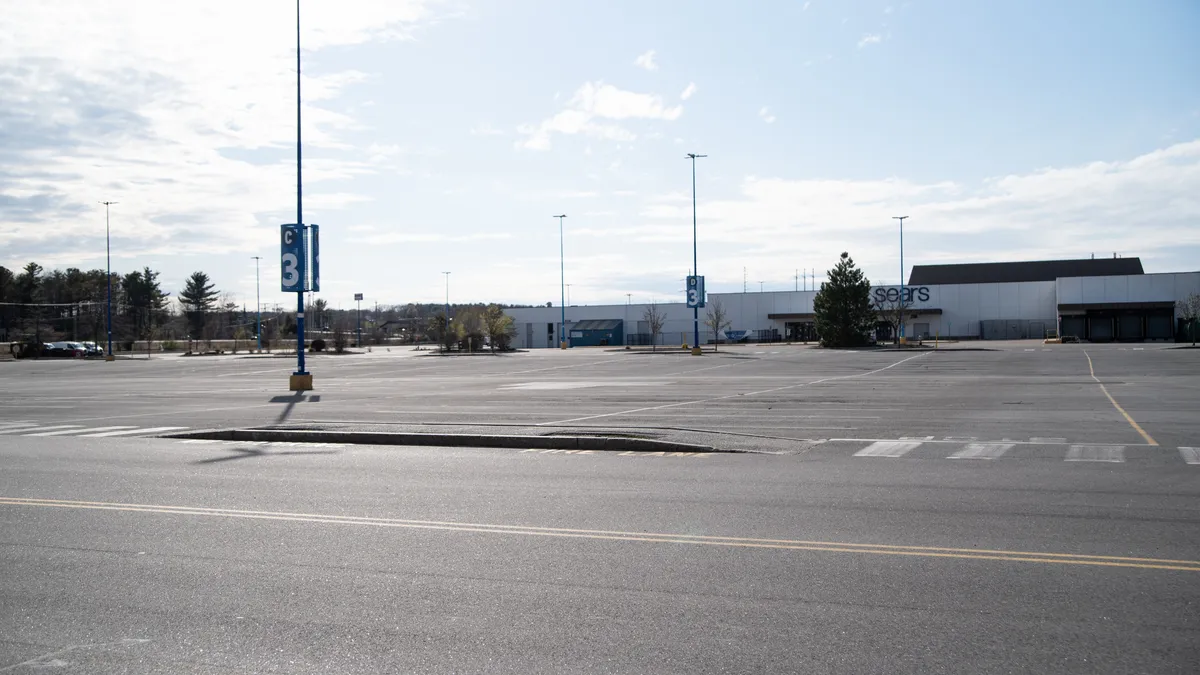Dive Brief:
-
A suburban migration in part related to the pandemic may benefit some malls, but already weak malls in less populated areas continue to "report sharply weaker tenant occupancy," according to a report this week from S&P Global Market Intelligence.
-
Three REITs recently in bankruptcy (CBL & Associates and PREIT, which filed last year, and Washington Prime Group, which filed last month) remain vulnerable due to high debt ratios and locations in less populated areas, S&P researchers noted.
-
The loss of anchors like Sears and J.C. Penney are well-documented stresses on these B and C malls, which represent nearly a third of all U.S. malls, per the report. But declines in sales per square foot at inline tenants are also a factor, with $350 or below a danger zone, S&P said.
Dive Insight:
It's difficult to understate just how much the pandemic has roiled the retail industry for more than a year.
Last year's shutdown of nonessential retail spurred permanent store closures, e-commerce growth and changes in consumer behavior. According to a report from Fitch on Wednesday, net operating income at malls fell 5.7% after years of growth, and the firm's outlook on the sector is negative.
It was a different story at strip centers. Those anchored by grocery stores and mass merchants like Target and Walmart enjoyed a particular advantage because they were deemed essential retailers, S&P said. Meanwhile, the loss of anchors has driven specialty retailers like Sephora away from traditional malls, according to S&P's report.
Malls' debt delinquency is up, with 10.7% of commercial mortgage-backed securities loans more than 30 days delinquent in June, a five basis point increase from May, per S&P's report, citing Trepp data. Retail delinquency in the space is second, behind lodging, but malls in particular are worse off than other retail properties, S&P said.
But the disease outbreak and lockdowns put in place to thwart it aren't fully to blame for the downfall of some shopping centers. Gap Inc. back in 2019 said that anchors' failure to drive traffic the way they once did made malls undesirable locations and is now in the midst of closing hundreds of stores. That has led malls to find replacements for department stores as anchors.
Indeed, S&P analysts said that struggling malls could stem their declines by finding retail tenants whose sales include e-commerce, or even non-retail tenants like medical offices, warehouses or activity-based businesses like rock-climbing centers. Other analysts see less hope in such moves, with little evidence so far that they can lead to meaningful recovery in foot traffic and sales.















